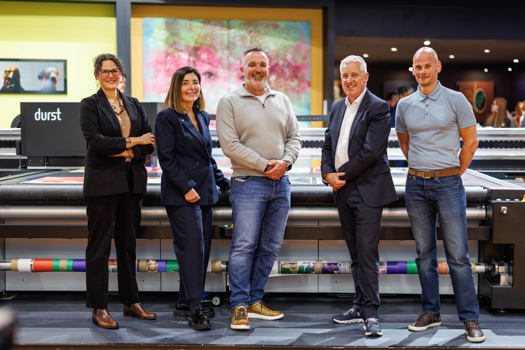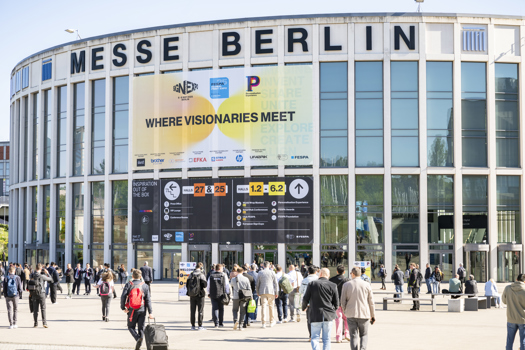The challenge
For a company the size of South Wales-based litho printer Stephens & George (S&G), a well co-ordinated waste management strategy plays a key part in its success as a business, especially when managing director Andrew Jones’s short-term goal is to push turnover up to £30m from £25.3m in 2014/15.
“Of course we are always trying to reduce the amount of waste that comes out of our plant but unfortunately if we increase our business we will produce more waste,” says Jones. “The fact is that we have a process that needs chemicals, inks, aluminium plates and such like.”
Jones, who joined the family-run firm in 1979, remembers the days when water companies “were only just waking up to what was going down people’s sinks” and when waste paper was simply shoved into black bin liners “and we were just grateful someone would pick it up for free”.
Since then of course things have changed dramatically.
“It was around 10 years ago,” says Jones, “at the end of our financial year in March 2005, that I was reviewing our accounts and saw that the cost of our waste was £60,000. You can probably imagine what I said. I can’t repeat it here.”
He continues: “I realised it was a big issue. It was up £20,000 on budget and we’d put 1,500 tonnes of waste into landfill and landfill tax was about to go up by £20 per tonne. That’s when I got really serious.”
The challenge was then to work out a strategy, get buy-in from his staff and make it work long-term. A strategy, he says, that today needs constant monitoring, reassessing, improvement and progression.
The method
At that time S&G already had a firmly cemented relationship with J&G Environmental, which took away the firm’s hazardous and print-related waste. “At the very start, around 30 years ago, they were only taking aluminium, silver flake and a bit of film off us, but now it’s everything in between from blankets and chemicals to packaging and rags,” explains Jones. “There’s really no competition. They’re the best at what they do and for us that’s really important.”
Meanwhile Biffa was also working with the company taking away its waste paper from one of S&G’s two fully-automated baling units.
But general waste was still mounting up and costing the company. “We decided to do a deal with Biffa to start streaming our other waste, which was all just getting chucked into skips. So they got us streaming it into recyclables, paper and landfill,” explains Jones.
“Doing something of that nature and magnitude in the business was a challenge and needed a real culture change but we made it as simple as possible. Red bins, green bins and blue bins. It sounds easy but in the early days, you can imagine, there was stuff in the red that should have been in the blue and stuff in the blue that should have been in the green. Red is waste paper, green is all recyclables except paper and blue is landfill; we call it the grotty stuff. We only have three of those, which shows how little we generate.”
“Even kitchen waste goes to our own wormery,” Jones says proudly. “My wife was banging on about it for ages so we put that in a while ago. Doing things like that helps get everyone on the same page, although I realise it’s not always that simple.”
With everyday waste management by now firmly embedded in S&G’s culture, and inspections carried out three times weekly by a dedicated team to keep things in check, Jones has turned his attention to other areas of the business to find ways of driving down waste costs and maximising return.
For a start he says, a fortunate side-effect of S&G’s recent investment in two Heidelberg Speedmaster XL 106s, replacing the last of its XL 105s, is not only an increase in productivity but a substantial reduction in the amount of waste paper generated, due to faster makereadies and the machines’ more economic CutStar inline sheeter facility.
“Our new equipment has meant that we’ve significantly reduced the amount of make-ready copies that we require to maybe 110 sheets or even 75, so we’re saving there too,” Jones explains.
In addition S&G opted to try processless plates at the start of 2014, recently committing to a five-year deal with Agfa on its Azura TU chemical-free plates, which Jones says has reduced water consumption during processing by 95% with around 87% savings on plate chemistry. Not just that, but ‘wasted’ man-hours spent cleaning processor units have shrunk from four per week to 30 minutes plus a daily wipe-down.
The firm has also looked at energy consumption, which Jones counts as another ‘waste’ product, opting to replace six compressors with two variable speed compressors creating a 6% reduction and a whopping 65% reduction in consumption through new lighting.
Jones explains: “Our first factory was refurbished in 1986, the new factory was built in 1995 and the third in 2004, which meant they all had completely different lighting standards but I wanted it to be the same throughout. So we replaced all our indoor lighting with the T5 lighting system about five years ago, which cost us £48,000 but it will save around £20,000 a year in electricity costs in the long-run. We also replaced our 500W exterior halogen lights last year with 5W LEDs at a cost of £10,000.”
“We are investing across the board to make savings for the long-term,” he adds.
Other wasted costs that Jones has nipped in the bud in the last few years have come from deliveries, where the business has streamlined its activities, now operating five Mercedes Sprinter vans of its own and greatly expanding its use of Interhaul’s overnight pallet services, sending out 6,700 pallets in the last year. This, Jones says, has made “a massive difference to delivery costs”.
The result
Since that horrible moment at the account books 10 years ago S&G has cut its landfill from 1,500 tonnes a year to just five and can boast that 98.5% of all waste produced at the site is now recycled, which of course has positive repercussions not only on the company’s books but also on S&G’s environmental credentials.
Born and bred in the mining region of South Wales, Jones is no stranger to the fact that care and investment are key to protecting and improving the environment, but he is also realistic that when running a business the decisions are primarily based on cost.
“If you can make the effort to think about the issues you can obviously improve your business and there are cost benefits to doing the simple and correct things rather than just sticking your head in the sand,” he says.
He adds: “I can’t honestly say that because we uphold certain environmental standards that we get more business, but I’d like to think that the customers, who are pretty savvy these days, take into account all the offerings we have and want to deal with us for a range of reasons, not just pricing. I think what we do with our waste and environmental management is just one of the spokes of the wheel when clients look at our whole package.”
Jones says that currently he is happy with the overall waste management strategy at S&G and has taken on a facilities apprentice as part of a succession plan to ensure that the standards and procedures implemented so far don’t wane.
His next project in cost-saving and reducing waste output is again focused on energy wastage and with meetings going on this month, could potentially see an imminent investment in photovoltaic engineering.
He explains: “We’re looking at putting solar panels on our roof, which we understand could save around £30,000 a year in electricity. We currently spend around £620,000 a year on electricity so it’s only about a 5% saving on our total bill but that’s still a lot of money.
“It’s among the things we are looking at to try and make us more efficient and cost-effective. We are always looking to better ourselves,” Jones says.
VITAL STATISTICS
Stephens & George
Location Merthyr Tydfil
Inspection host Managing director, Andrew Jones
Size £25.3m; Staff: 235
Established 1912
Products S&G is a litho printer specialising in brochures, catalogues, magazines, commercial products, sports publications as well as in-house laminating, perfect and PUR binding, folding, saddle-stitching and mailing capabilities
Kit Five Heidelberg Speedmaster XL 106s: one 10-colour, three eight-colour and one five-colour with UV varnishing; one Heidelberg double-crown Letterpress cylinder; two Agfa Avalon platesetters, one Canon colour plotter, one Epson 9900 10-colour wide-format proofer, three Polar guillotines; nine Stahl folders; three Muller Martini perfect binders; 18 Muller Martini saddle-stitching stations; one Autobond thermal laminator; two Sitma wrapping machines
Inspection focus Making the most of waste management
TOP TIPS
The first thing you need to do to make your waste management strategy work is to get buy-in from your staff, according to Jones. You have to explain the how and the why of it, because without their co-operation it will fail.
Once the system is implemented there needs to be an effective monitoring procedure and dedicated roles assigned to the task, because as Jones puts it: “You can put all sorts of systems in place, but with the best will in the world, if you don’t monitor them, they’ll just break down.”
Ensure it’s a simple process. If the system becomes too complicated there is more room for communication breakdown and error. “There are much more complicated processes for waste management,” says Jones, “but I wanted to keep it simple to give us the best chance of making a success of it.”
Take time to research what services are available on the market and choose the best partners available for your specific needs. Make sure they have a proven track record in dealing with the specific waste streams and materials you are generating. Don’t compromise.
Keep a constant eye on market prices so you know exactly what you could and should be getting for your money.










